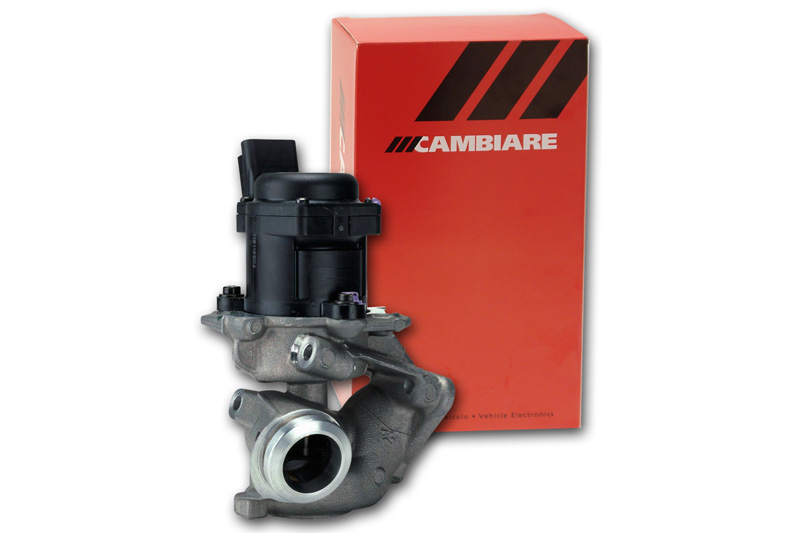
Cambiare talks to PMF about the technology behind Exhaust Gas Recirculation (EGR) valves and provides some key troubleshooting pointers.
Comprehensive ranges from Cambiare
Cambiare EGR valves are backed by a two year/30,000 mile warranty. Fully catalogued on FPS’s F:Drive, MAM Autocat and www.cambiare-ve.com, Cambiare parts are available via same/next-day delivery.
Functioning to recirculate a metered quantity of exhaust gas back into the combustion process, the EGR valve is a critical component in the modern engine management system. By reducing the amount of oxygen entering the chamber, the EGR valve helps reduce the temperature reached during the combustion process and helps to increase engine efficiency. This in turn reduces nitrogen oxides (NOx) in diesel and petrol engines.
What does Cambiare offer?
Cambiare’s EGR valve range comprises more than 150 parts that covers over nine million vehicles across the UK. This credible programme affords quality assured, OE- specified replacement parts at a competitive price point.
Cambiare offers pneumatic and electrical EGR valves covering popular vehicle applications, including the Audi A4, Volkswagen Golf and BMW 3 Series.
Pneumatic EGR valve
These valves are operated by a vacuum- controlled diaphragm which allows the ECU to control the opening and closing of the valve. Pneumatic valves allow for the higher flow rate that is required by newer diesel applications.
Electrical EGR valve
Controlled by an integrated electronic drive module, these units are normally used in vehicles where the vacuum generation is not sufficient to operate in a pneumatic valve.
EGR valve with cooler
Cambiare has identified that EGR valves with coolers is a growing sector within the aftermarket. Fitting a large variety of VAG applications, the Cambiare range of EGR valves with coolers covers more than 812,000 vehicles in the UK.
EGR coolers support the reduction of NOx by operating as an air-to-liquid heat exchanger device that uses engine coolant to reduce exhaust gas temperatures prior to recirculating them through the engine’s intake system. This has the effect of cooling down the combustion chamber temperature. The dangerous NOx emissions are formed when engine chamber temperatures rise. By keeping the combustion chamber cool, the EGR cooler is able to reduce NOx emissions produced by the vehicle’s engine.
Key replacement tips
Due to the role of the EGR valve within the engine management system and the harsh environment it operates in, the EGR valve is susceptible to failure due to the following causes:
- ? Soot, carbon and oil deposit build-up
- ? Extreme temperatures that lead to valve
damage
Symptoms of a faulty EGR valve include: ?
- Loss of engine power
- ?Engine juddering
- ?Car falling into ‘limp mode’
- ?Black smoke appearing from exhaust
If an EGR valve is proven faulty, installers should make a point of replacing the valve, rather than attempt to clean the unit. It is also important to clean the pipe-work leading to the EGR valve to ensure that the existing deposits do not transfer onto the new unit.
Precise troubleshooting
To avoid misdiagnosing an EGR valve as faulty, it is important to check the other components that may cause similar symptoms to surface:
- Air mass sensor – a faulty air mass sensor may not be measuring the air flow rate correctly.
- Throttle body – a malfunctioning throttle body may result in an insufficient amount of air entering the engine.
- Vacuum pump – a faulty vacuum pump may prevent pneumatic EGR valves to actuate properly.
Note: When inspecting an EGR valve, installers are advised to wear protective gloves as the EGR valve can be extremely hot whilst the engine is running.







